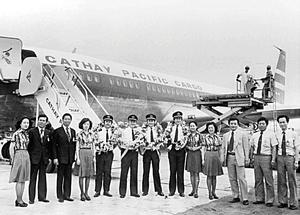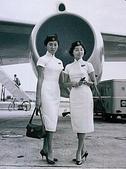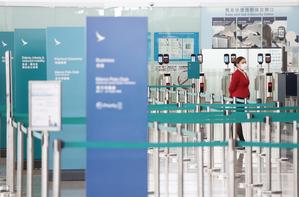 Cathay Dragon fleet sits parked on the tarmac at Hong Kong International Airport. (EDMOND TANG / CHINA DAILY)
Cathay Dragon fleet sits parked on the tarmac at Hong Kong International Airport. (EDMOND TANG / CHINA DAILY)
Oct 21 marked the end of an era in Hong Kong’s aviation history. Cathay Dragon, a subsidiary of Hong Kong’s flagship airline Cathay Pacific, winded up after an eventful 35-year innings.
Hard hit as it was by a drastic reduction in tourist traffic to Hong Kong since the anti-government protests began in mid-2019, COVID-19 drove the final nail in the coffin. In a bid to downsize operations and work out a massive restructuring of the company, Cathay Pacific has decided to let go of its little sister. At least around 2,500 people employed by Cathay Dragon are expected to lose their jobs.
Old-timers will remember that the journey of the Cathay Dragon brand, previously known as Dragonair, began as Hong Kong Dragon Airlines Limited. Images of Dragonair flights taking off from Kai Tak International Airport, negotiating their way through the maze of high-rises in congested Kowloon City, are all too vivid memories of those who were around in the 1990s.
 The launch of Cathay Pacific Cargo, the first Asian freight carrier brand, in 1976. (PHOTO PROVIDED TO CHINA DAILY)
The launch of Cathay Pacific Cargo, the first Asian freight carrier brand, in 1976. (PHOTO PROVIDED TO CHINA DAILY)
Initially Cathay Pacific saw Dragonair as a competitor. Then it decided to focus on the international market, trying to make the most of Hong Kong’s strategic location as a transit hub, while Dragonair was left with the emerging Chinese mainland market to cater to.
It proved to be a boon for Dragonair. Following the opening-up of its economy in 1978, China was already on the road to fast-track development and the new prosperity led to increased traffic of people and goods between Hong Kong, Shanghai and Beijing. By the first decade of 2000s, Dragonair was operating a passenger service to Taipei, Bangkok, Tokyo, Frankfurt, London, Manchester and Amsterdam. Its fleet was growing exponentially. As indeed were the number of staff who came on board.
In September 2006, Dragonair became a wholly-owned subsidiary of Cathay Pacific. It was another 10 years before the airline was rechristened as Cathay Dragon in January 2016.
 Cathay Pacific crew in Hong Kong, in 1962. (PHOTO PROVIDED TO CHINA DAILY)
Cathay Pacific crew in Hong Kong, in 1962. (PHOTO PROVIDED TO CHINA DAILY)
The news of the brand ceasing all operations yesterday, though sudden, was not altogether unexpected. Earlier, Cathay had announced it was cutting 8,500 jobs globally to cope with the HK$9.9 billion (US$1.3 billion) loss the airline had suffered in the first six months since the novel coronavirus struck. Even a HK$39 billion bailout received in June, followed by a HK$27.3 billion injection from the coffers of the Hong Kong government, could not prevent the inevitable, as passenger traffic has been reduced to less than 1 percent of the normal volume since the pandemic virtually ruled out air travel.
Tough times, as is often said, do not last forever. The challenge now is to survive the debacle and make it to the other side of a global health crisis. One day people will resume flying for business and pleasure like they used to. When the aviation industry has put the worst behind it and begins to register signs of growth once again, let’s hope the Cathay Dragon staff, who lost their jobs on Wednesday because the brand they worked for ceased to exist, will not be forgotten by the parent company.
 A Cathay Pacific aircraft flying through Kowloon City as it prepares to land at the Kai Tak Airport in 1997. (EDMOND TANG / CHINA DAILY)
A Cathay Pacific aircraft flying through Kowloon City as it prepares to land at the Kai Tak Airport in 1997. (EDMOND TANG / CHINA DAILY)
 Celebrating the introduction of a new livery on one of Cathay Pacific’s Boeing 777-300ER aircraft at Hong King International Airport in November 2015. (ROY LIU / FOR CHINA DAILY)
Celebrating the introduction of a new livery on one of Cathay Pacific’s Boeing 777-300ER aircraft at Hong King International Airport in November 2015. (ROY LIU / FOR CHINA DAILY)
 Cathay Pacific staff leave their workplace following announcement on Wednesday that Cathay Dragon will cease operations. (CALVIN NG / CHINA DAILY)
Cathay Pacific staff leave their workplace following announcement on Wednesday that Cathay Dragon will cease operations. (CALVIN NG / CHINA DAILY)
 Cathay Pacific ground staff at the Hong Kong International Airport on Wednesday. (CALVIN NG / CHINA DAILY)
Cathay Pacific ground staff at the Hong Kong International Airport on Wednesday. (CALVIN NG / CHINA DAILY)
 Cathay Pacific check-in counters at the Hong Kong International Airport look deserted. (CALVIN NG / CHINA DAILY)
Cathay Pacific check-in counters at the Hong Kong International Airport look deserted. (CALVIN NG / CHINA DAILY)


